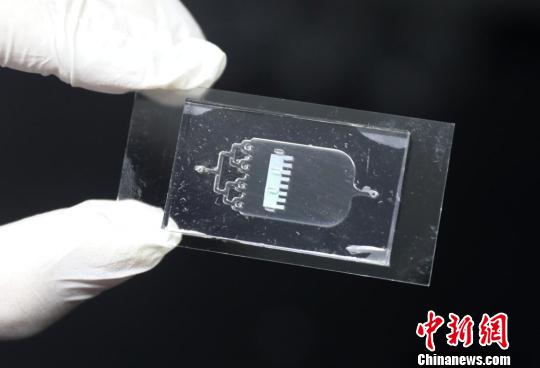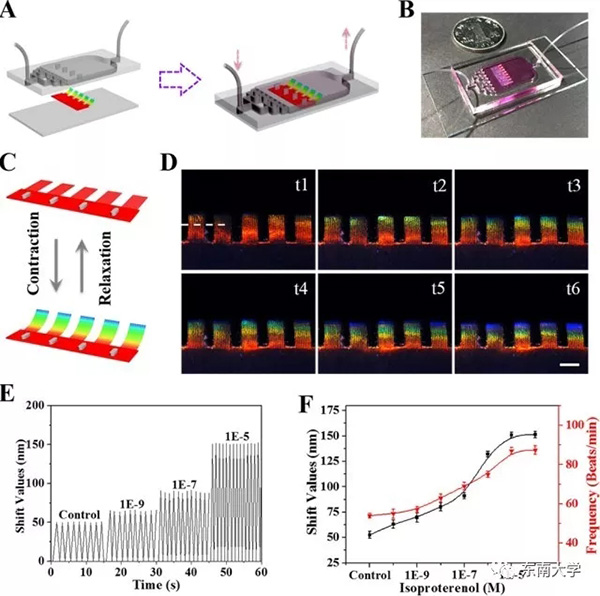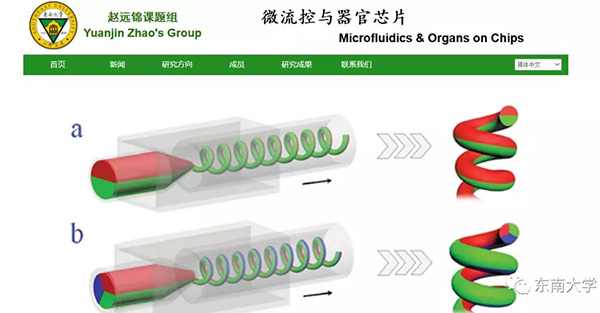
Photo: Chinanews.com
Chinese scientists have developed a special chip integrated with living rat heart cells that can be used for testing heart disease drugs.
Led by Professor Zhao Yuanjin, the bio-electronics lab at Southeast University in Nanjing, Jiangsu Province, made the breakthrough in“organ-on-chip” (OOC) research after more than three years’ hard work.

Photos: Official WeChat account of Southeast University
OOC is the use of microprocessing technology to carry out drug evaluation and biological research by using bionic microorgans built on microfluidic chips.
According to Zhao, researchers made the chip with paper-thin hydrogel film engraved with nanocrystal patterns, topped with a layer of living heart muscle cells from a rat. When the heart cells beat, the nanoparticles shrink or stretch and change color.

The technology could be used to determine how cells might react to experimental heart medications, providing a new platform for drug screening and single-cell biological research.
The research was detailed in a paper titled "Bioinspired living structural color hydrogels," published in the Science Robotics journal on March 28, 2018.
"This biohybrid, living, structural color hydrogel may be widely used in the design of a variety of intelligent actuators and soft robotic devices," the paper says.



